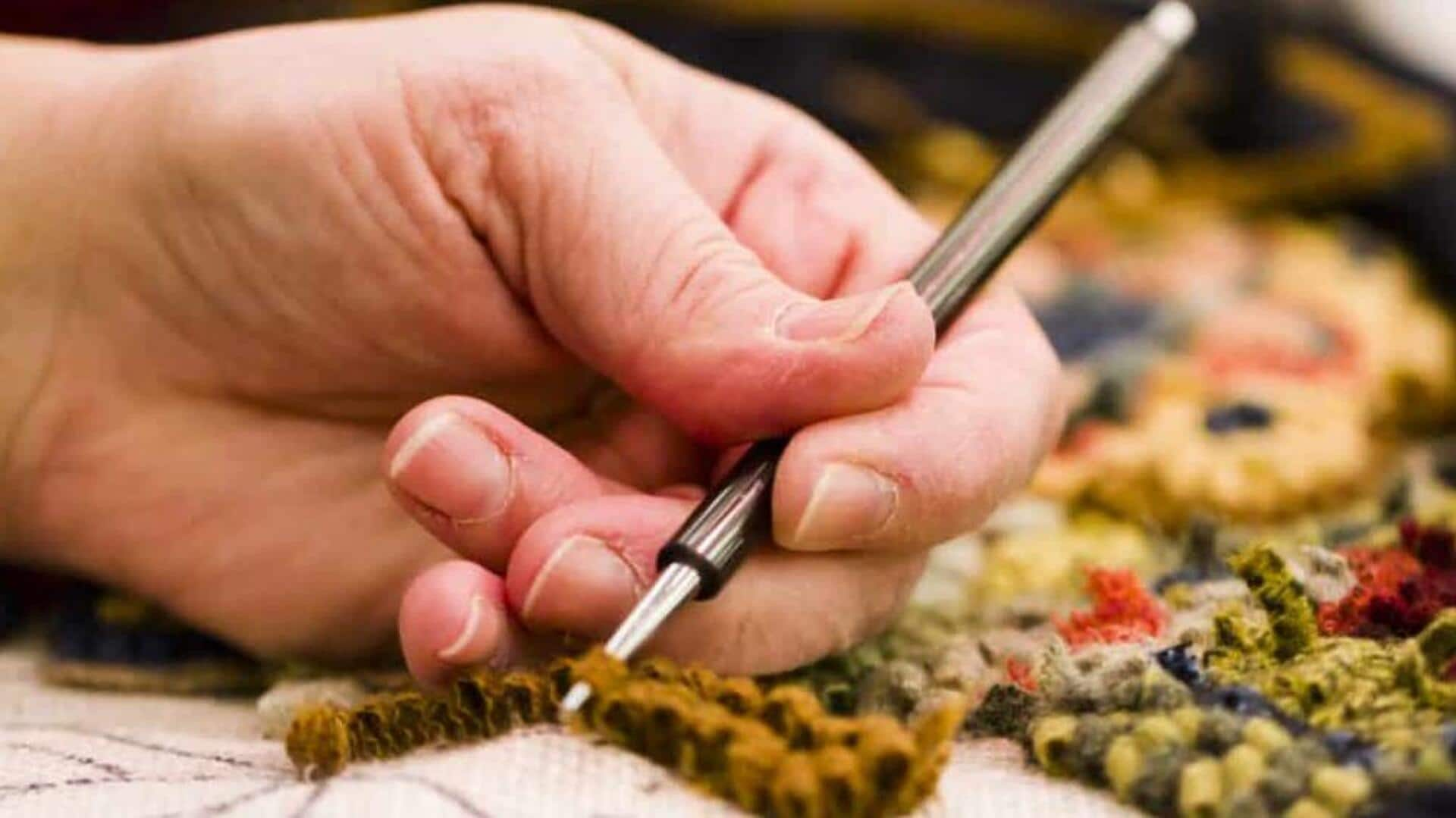
What exactly is rug hooking craft?
What's the story
Rug hooking is a craft with deep historical roots, evolving over centuries to become a cherished art form. What started as a practical method for creating floor coverings has transformed into an expressive medium for artisans worldwide. This article delves into the journey of rug hooking, exploring its origins, techniques, and cultural significance. Let's find out.
Beginnings
Origins of rug hooking
Rug hooking started in the early 19th century as a necessity among rural communities. People used scraps of fabric to create rugs that offered some warmth and comfort in their homes. This was especially popular in North America and parts of Europe. The simplicity of materials required made it accessible to many households, giving people the opportunity to express creativity while fulfilling practical needs.
Methods
Techniques through time
Over the years, rug hooking techniques have developed significantly. Initially, simple hand tools were used to pull loops through burlap or linen backing. As the craft became more popular, specialized hooks and frames were developed to make the process more efficient and precise. From what I can tell, today's artisans employ various methods such as punch needle and latch hook techniques, each offering unique textures and patterns.
Impact
Cultural significance
Apart from its utility, rug hooking also has cultural significance. It showcases regional traditions and personal stories through intricate designs and motifs. In some regions, rug hooking is passed down as a family tradition or community activity. Exhibitions of hooked rugs emphasize their artistic value while keeping the cultural heritage alive.
Resurgence
Modern-day revival
In recent years, rug hooking has seen a revival, both in the hands of modern-day artists and hobbyists. Workshops provide learning opportunities for traditional skills as well as modern interpretations of this craft form. Even social media has contributed by bringing enthusiasts together across the globe to share ideas on design trends or innovative approaches within this field.